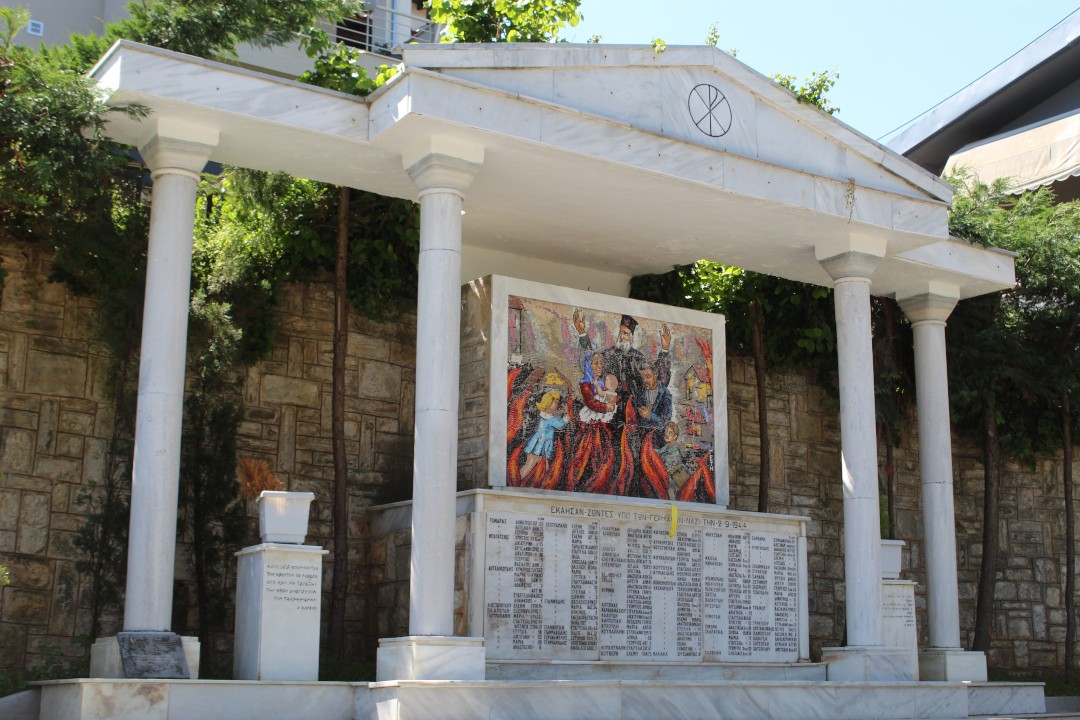In October 1940, Italian forces attacked Greece, and the country officially entered WWII. By spring 1941, Greece was under triple occupation, divided among Germany, Italy and Bulgaria. The mountain of Hortiatis was used as a hideaway and shelter, as well as a base of operations, by the resistance groups. The massacre of Hortiatis on 2 September 1944 was an act of reprisal by the Nazis.
The first memorial is the Holocaust Memorial, which is engraved with the names and ages of those murdered, while the mosaic depicts the events that took place. The sculpture was erected on 2 September 1960. It was created by engraver Ms. Geti Kremmidas who used marbles from the historic Monastery Hortaitissa (early 10th c. AD) for its construction.
The second memorial is at the Daboudis Hous, one of the two sites of massacre during the Hortiatis Holocaust. The Nazis led civilian residents to the Daboudis family home, locked them up, and burned them alive. The bones of the martyrs are kept inside the historic house andhe names of those executed are commemorated outside.
The rest of the residents were led to the Gouramanis Bakery, where they were also burned alive. This is the site of the third memorial. Those who tried to escape were killed by the machine guns that the executors had put at the entrance of each building. A chapel and a memorial plaque were placed on the site of the massacre.
